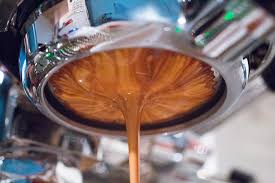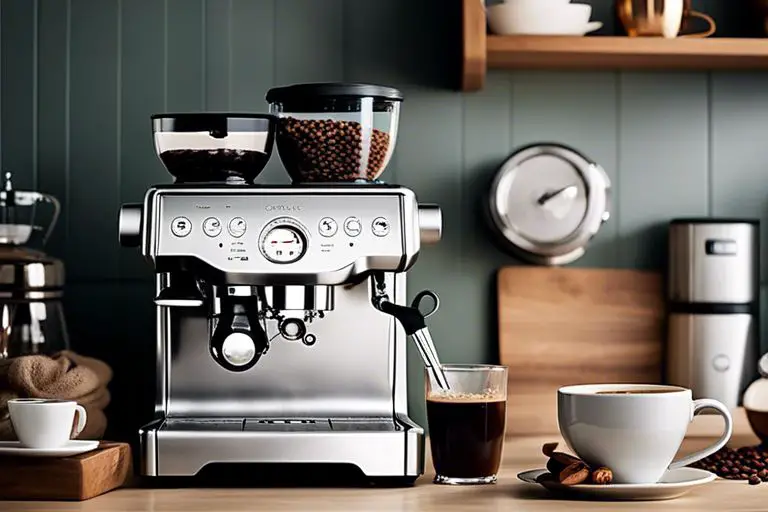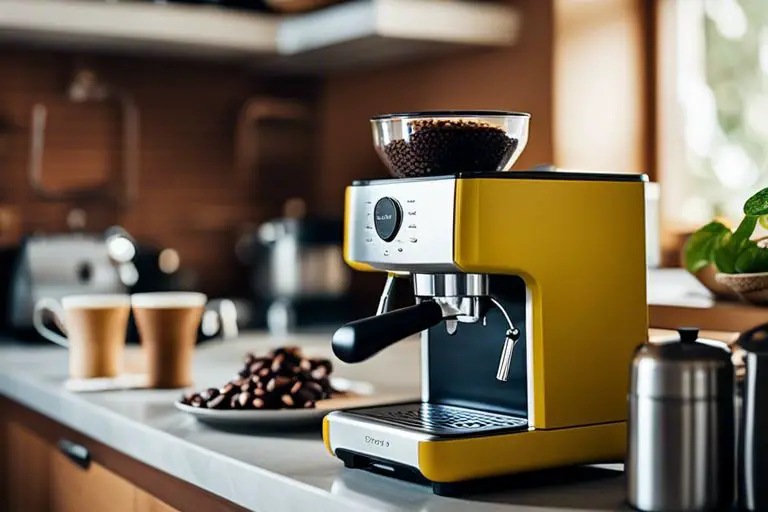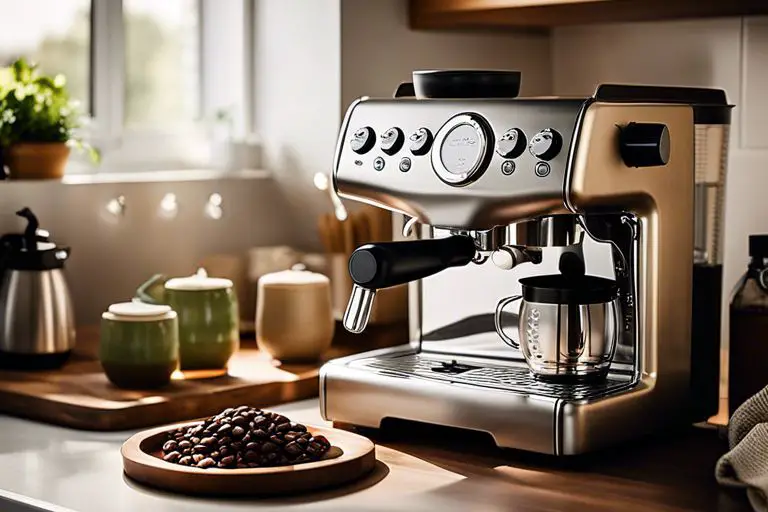Only about 30% of the ground coffee that goes into your portafilter will end up in your cup so perfecting the coffee extraction process is crucial to achieving a delicious tasting cup of coffee.
Perfect coffee extraction requires a whole range of things to come together such as the time it takes to deliver your coffee and using the right amount of coffee to start with.
Other important factors are choosing the correct grind size, making sure your ground coffee is compressed correctly in the filter basket (tamped), the temperature of the water and the pressure that the water is forced through the coffee and into the cup.
If you want to take your coffee making skills to the next level and make a truly exquisite double espresso that is so good that you can drink it on its own then knowing the small things to look out for will elevate your coffee to a level that far exceeds what you will get in the vast majority of coffee shops.
In this article, we will delve into the detail of coffee extraction and talk about some of the things which make a difference that are in addition to the normal brew recipes and brew ratios.
Getting the basics right is very important as well and so if you are unfamiliar with the process of making espresso or need to refresh your memory then you can take a look at these articles:
How to make an espresso like a professional barista
Water pressure
Most home espresso machines deliver water through the ground coffee and into the cup using 15 bar of pressure. This is the case with some of the biggest coffee brands in the world such as Delonghi and Nespresso.
There is nothing wrong with that level of pressure and if you manage all of the other variables correctly then you can get a good cup of coffee with 15 bar of pressure.
However, the coffee machines you find in coffee shops like Starbucks or Costa or Café Nero use machines that deliver coffee at 9 bar of pressure.
We don’t need to get into the science of pressurised water delivery through coffee because the large coffee chains have already done that for us. If it was better to use 15 bar of pressure they would.
Delonghi and Nespresso have done a great job of marketing themselves and millions of people worldwide enjoy coffee delivered from their coffee machines but if you want to get as close to perfection as possible then replicating as close as possible what they use in Costa or Starbucks is a good starting point.
For the domestic home market, the one brand of coffee machine that delivers 9 bar of pressure in the same way as the high street coffee chains is Sage.
Sage coffee machines are in our opinion the best affordable machines for the home market that give you the best opportunity to make a really great cup of coffee.
Sage machines require a bit more manual intervention whereas Nespresso and Delonghi focus more on convenience and automation.
If you are looking to upgrade your coffee machine or are just considering your options then these are the best of what Delonghi, Sage and Nespresso has to offer:
Best Nespresso coffee machines
Managing the coffee in the basket
Because water gets forced through the ground coffee at high pressure it will find the quickest way through the coffee and into your cup that it possibly can, the path of least resistance.
Making sure that your coffee grounds are perfectly prepared before water is introduced to them is very important to the end result and can make the difference between an over-extracted or under-extracted shot of espresso and could result in a bitter or sour taste instead of sweet and pleasant.
Air bubbles in the coffee or not having a complete seal of coffee at the edges of the filter basket are both things to look out for to avoid incorrect delivery of your coffee.
What you want is for the water to run through the entire bed of coffee not through air pockets or down the side of the puck.
If you are experiencing inconsistencies with the flavour of your coffee but are using the same brew recipes each time (dose of coffee, extraction time, grind size etc) then keeping an eye on these details will help to finesse the coffee extraction process.
Technique
Preparing the distribution of ground coffee in the basket before you insert the portafilter into the coffee machine is important. A poor technique can result in a faster than desired extraction and will result in a poor quality shot regardless of how well you have managed all the other variables.
Depending on the set up you have, you will either have a separate coffee grinder or a grinder that is built into your coffee machine.
If the grinder is built into your machine then the ground coffee will end up in a heap in the portafilter.
The first tip is to shake the portafilter from side to side during the grinding process. This process will start to distribute the coffee more evenly in the filter basket instead of just being a mound of coffee that is completely uneven and can spill over the edges altering the dose.
Once the coffee has been ground into the portafilter, tap it on the worksurface. That will compact and push the coffee grounds towards the bottom of the portafilter and remove any air pockets.
Next, carefully rub your finger around the inside of the portafilter along the edge of the top of the bed of coffee. You are looking to create a seal so that water cannot escape or “channel” down the side of the coffee puck during extraction.
You can access if you have your technique spot on by monitoring the colour of the coffee as it flows through the portafilter and into your cup.
It will start off dark, almost black and will transition into a dark caramel colour, then lighter caramel and towards the end of the extraction a blonde colour.
For a 30 second extraction, each of these colours should be present for around 7 seconds. That will tell you that the water is flowing through the puck evenly and is not finding a quick way through around the side of the puck or through any air bubbles.
Whilst you are perfecting your technique, check the coffee inside the portafilter after the coffee has been delivered and before you discard the used coffee grounds.
When you press your finger into the coffee it should be solid and not show any fingerprints. If it does show fingerprints then it’s not dense enough and you need to tamp a bit harder because otherwise the coffee will not flow evenly through the coffee into your cup.
The overall message here is that it’s not always about adjusting the grind size or the amount of coffee you are using to get to a 30 second coffee extraction.
Use the tips above to check your coffee distribution technique and combine them together with your brew recipe to fine-tune your skills.
Here is a video explaining the extra things to consider if you are seeking the perfect coffee extraction:




